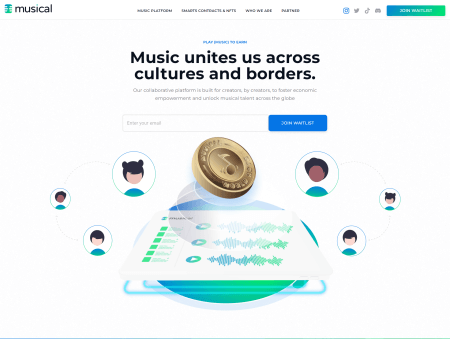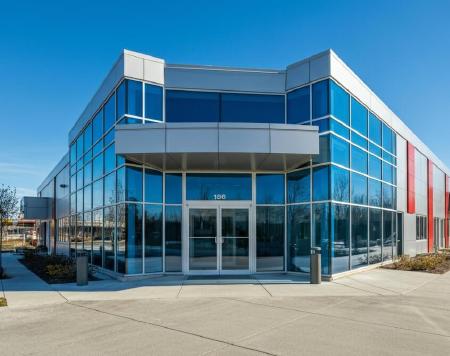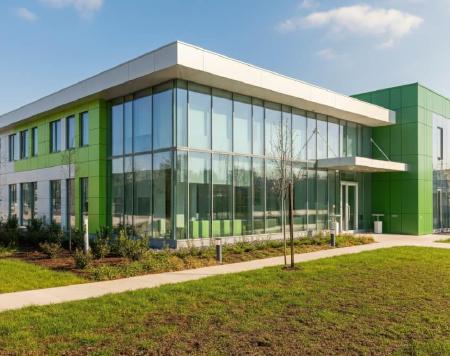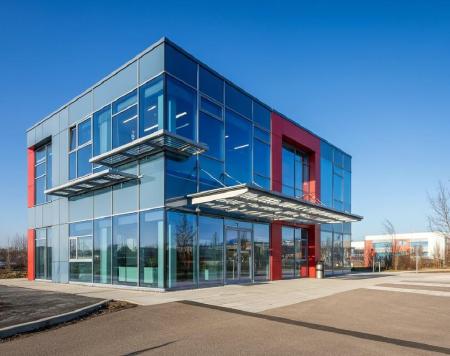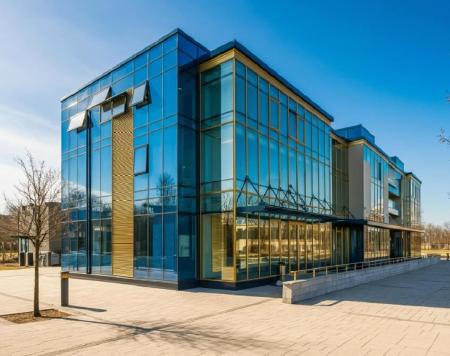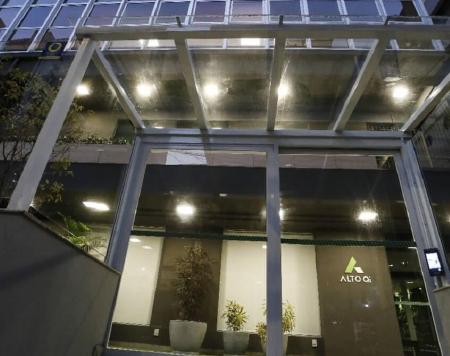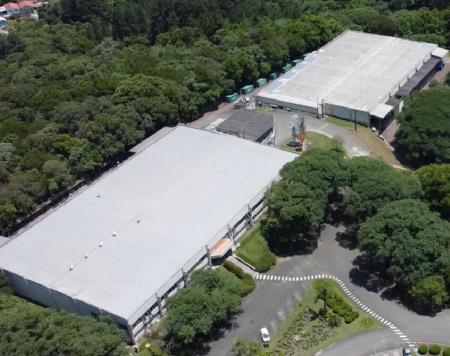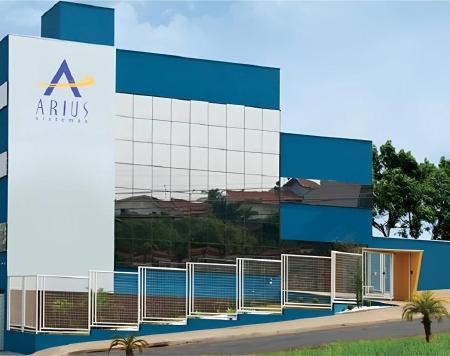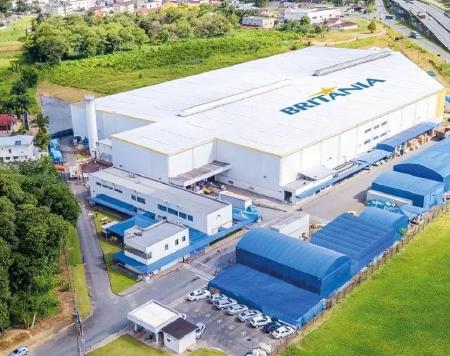Up-to-date with new trends, Visionnaire developed the Musical App project on Blockchain with NFTs
Client
Musical World
Inc.
Area
Entertainment
Problem
The need to
create a website and an app for the Musical initiative, which allows collaboration between artists, musicians, record companies,
studios, schools and many others. Because it is a precursor idea and with the use of new technologies, it was necessary to
assemble a properly up-to-date and trained team to create an attractive, prepared for the crypto world platform.
Solution
Visionnaire
quickly assembled a team that developed a platform that was attractive, innovative, easy to use and ready for the innovations
provided by the concept of Decentralized Finance.
Results
The result is an attractive, innovative and easy-to-use platform.
It just takes a simple registration to be able to access the features of Musical. For starters, it is possible to upload audio
tracks, identifying instruments used, genres and tags to facilitate searches.
There is also a project area where collaborative work with other users is listed. While creating a project, Musical allows users to determine profits sharing (whether in equal parts or following a custom configuration). It also allows users to define whether the collaboration involves just one track or an entire album. Many related files can be linked to the project, not just finished audio tracks.
Creators can also market their productions in cryptocurrency transactions, making Musical an innovative, ready for the future and decentralized platform.
Everything in the Musical project is innovative, and the technologies used are modern, still on the way to becoming part of the daily life of the general public. The challenge of always being up-to-date is heavy, but constant development is part of Visionnaire's DNA.
This Case is another great example that companies of any size can count on Visionnaire to turn innovative initiatives into reality. It is also another international Case for our portfolio. We are adding more and more international projects to our list, especially after the Covid-19 pandemic. We have customers in the United States, England, Germany and countries in South America, for example.
The partnership between Visionnaire and Musical is another positive result of the project. Visionnaire always keeps open the possibility of establishing long-term partnerships with our customers, and we are very happy when this is possible.
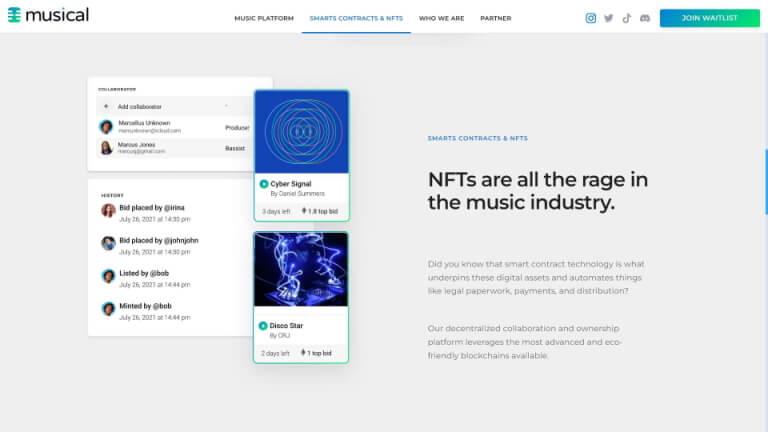
Technologies
For this project, the MERN Stack solution set was used. The letters
M-E-R-N indicate MongoDB (database), Express (Back-End), React (Front-End) and Node (JavaScript) technologies.
Blockchains used include Flow, Polygon and Solana. Flow is a technology from Dapper Labs, also responsible for dApps (applications that run on Blockchain) for the NBA, NFL, UFC and La Liga. The technology was designed as the foundation for a new generation of games and apps as well as the digital assets that power them. Polygon, in its turn, is a decentralized platform that allows developers to build scalable and easy-to-use dApps. Solana is also a blockchain protocol.
The following technologies were also used: Apache Kafka, Next.js and Nest.js.
For Front-End architecture: Next.js, JavaScript, React, Redux, NextAuth, MUI, React Intl and SWR.
For Back-End architecture: Nest.js, TypeScript, MongoDB Atlas, Apache Kafka, Redis and Mongoose.
For mobile app: Expo, JavaScript, React Native, Redux and Styled Components.
Detailed Problem
Musical is a global platform on which artists, musicians,
record companies, studios, schools and many others can connect with, collaborate on music, buy and sell finished works, support
creators, control royalties sharing, and even turn projects into NFTs (Non-Fungible Tokens). It is therefore a place that
creates economic opportunities for artists.
The idea arose in the city of Austin, Texas, in the United States. If in California there is Silicon Valley, where several high-tech companies and startups are located, the Texan city and its surroundings also form a hub of technological innovation, called Silicon Hills, due to the various technological endeavors that originated there.
It was in this scenario that Philip Rather, a former employee of Meta (a conglomerate that includes Facebook, Instagram, WhatsApp and other companies), conceived a collaborative platform, built by creators and for creators, with the goal of promoting economic empowerment and unleashing musical talent around the world.
Today, it is possible to think about empowerment through music thanks to the context of DeFi, or Decentralized Finance. To put it briefly, this is the concept of financial transactions without the need for intermediaries. Such operations are carried out on Blockchains, the name given to technologies that make transactions possible and guarantee their security.
In practice, with the Musical platform, creators can turn their works into NFTs, yet another growing technological innovation. NFT is the abbreviation for Non-Fungible Token. Put simply: think of a digital signature, a certificate of authenticity for something unique that cannot be replaced (hence the “non-fungible”). For example, a painting may have reproductions and forgeries, but only one can be the original. Like cryptocurrencies, NFTs are legitimized on blockchains.
Putting an innovative idea into practice requires up-to-date and specific knowledge, as well as agility. In this case, it was necessary to balance the innovative proposals of the project with the peculiarities of technologies in the crypto world, which is on the rise.
As one of the pioneer companies in offering its customers the option of hiring a complete solution based on Agile processes, from team assembly, going through well-defined processes and agile tools in the cloud, Visionnaire selected and provided the professionals properly trained to work on an existing and developing system.
A team was quickly assembled with a Project Manager, three Full Stack developers (therefore with both Back-End and Front-End capabilities) and a Mobile developer (thus capable of taking the initiative to mobile devices). As it was an international project, a team member was in charge of establishing the communication bridge between the client and the team.
Visionnaire uses different systems development processes to always adapt to the needs of its customers. The main process used is Scrum, following the Agile philosophy with the execution of weekly or biweekly sprints, all with intensive use of cloud tools.
Visionnaire has been using the Unified Process for a long time, following the PMI Project Management concepts of the PMBok (Project Management Institute, Project Management Body of Knowledge), more recently adapted for Agile and Scrum.
The team grew along with the project and it has the challenge of multiple cultures in multiple countries. The development fully in the cloud and in an agile way made by Visionnaire allowed the success of the project.
Presentation
Case Presentation ![]()
Brochure
Case Brochure ![]()


